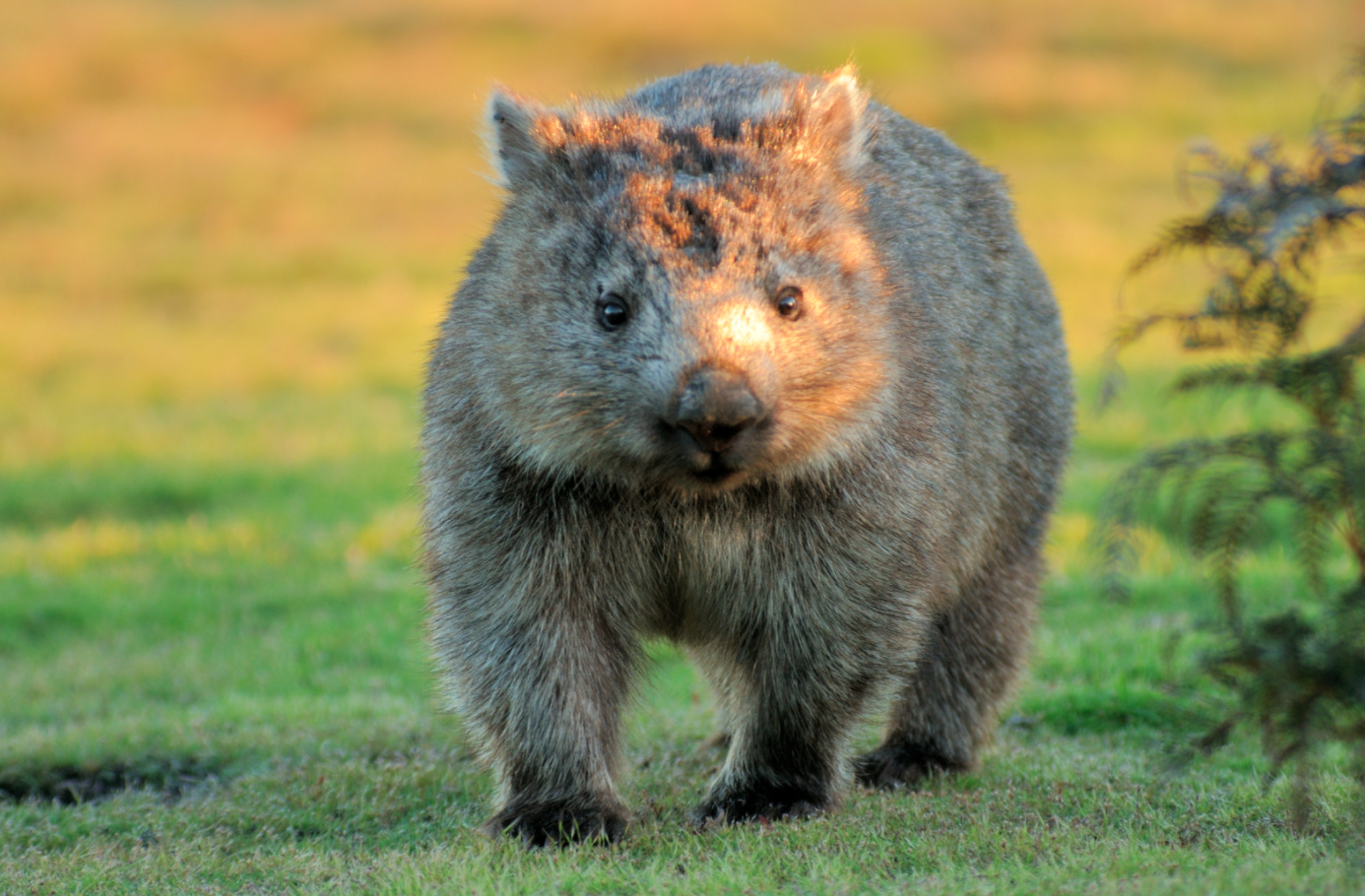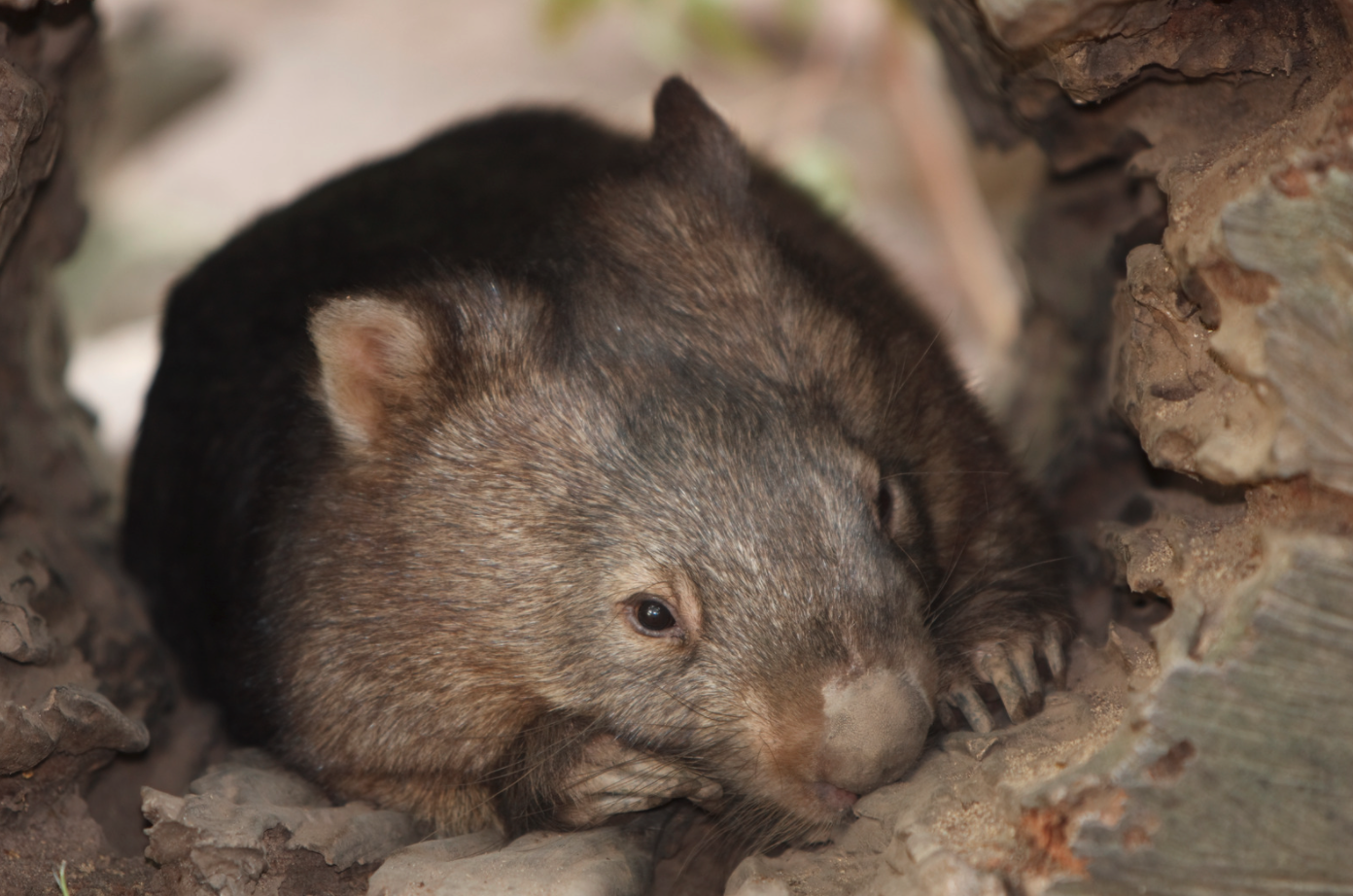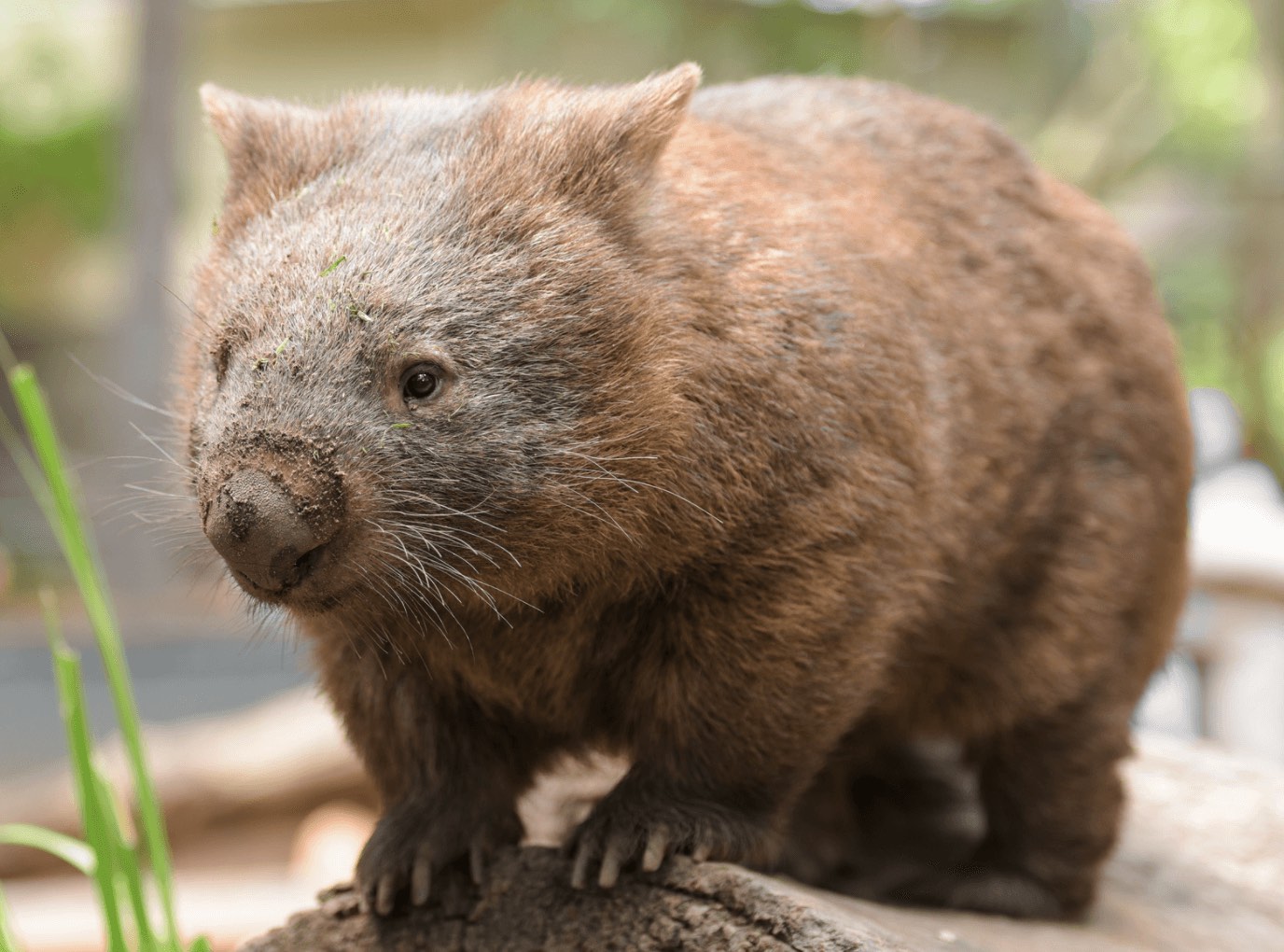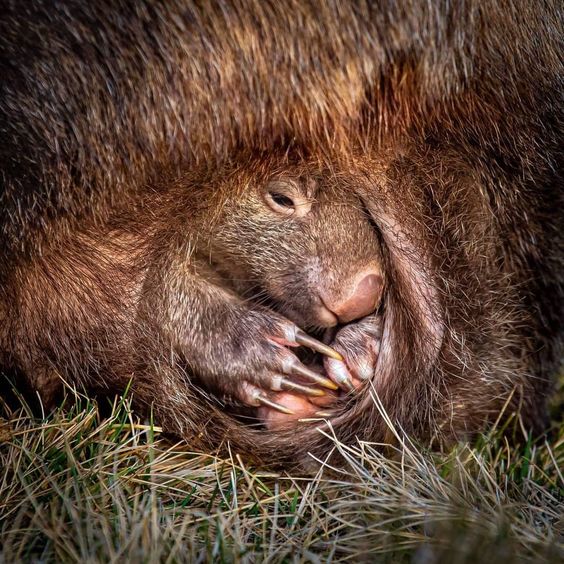Though it sounds like a made-up name, the wombat is in fact an Australian marsupial, closely related to kangaroos and koalas. Wombats are cute and cuddly-looking creatures, but they can also be feisty, territorial animals that stand up to predators—even humans—if they feel threatened. Though they may look adorable and small, these little guys can actually weigh more than 45 kilograms. If you’re wondering whether or not the wombat really could beat up your dog, the answer just might surprise you!
What are wombats?
Wombats are large burrowing mammals, meaning they dig long, deep burrows in which to live. This makes them harder to spot on walks and hikes than other native animals like kangaroos or koalas. Wombats tend to look larger than they really are because of their stocky build, small head and relatively short tail. They may be cute, but watch out—they can defend themselves with powerful claws and sharp teeth! Unfortunately, these adorable Australian animals are facing habitat loss due to human activity such as logging and farming. Wombats are common throughout the Blue Mountains.
Where can you find them?
Common wombats can be found in temperate forests and grasslands throughout eastern Australia. This includes most of Victoria, southern parts of South Australia, south-east Queensland and New South Wales. The wombat is a nocturnal burrowing animal so you’ll need to look for them at night if you want to see one (the daytime hours are better spent searching for koalas). Wombats have particularly large diggings which they like to spend their days sleeping within; they emerge just before sunset when they wake up and go out looking for food. Be sure to watch your step though as these big digging machines sometimes forget where they’ve been!
Are they really that cute?
Cuteness in mammals has been shown to play a role in reproduction, as well as being critical for nurturing behaviour. When an animal is identified as cute by humans, it increases trust between humans and animals, which leads to greater tolerance of these animals in our communities and natural habitats. This then helps increase acceptance of conservation efforts and protect species at risk.
How do they live?
Wombats live in underground burrows that they dig with their strong claws. They are nocturnal and mostly solitary animals, spending a large part of their lives in their burrows or foraging for food. The common wombat can weigh as much as 24kg and measure 1m from nose to tail, although it usually measures about half that length. Although wombats are often described as fat and clumsy-looking, they can be agile on their feet when necessary. An adult wombat requires an estimated five to 10 hours’ sleep each night. Being entirely herbivorous, an adult common wombat can eat up to 35kg of grass per night (about 25% more than an adult manatee eats per day). A wombat’s diet consists almost entirely of grasses and other low-lying vegetation; during droughts (which may occur regularly) wombats may supplement their diets with plant roots or bark.
What do they eat?
Wombats are true herbivores. They prefer to eat native grasses, bulbs, bark and roots. Wombats in captivity are known to have an excellent appetite and eat up to 35 kilograms of food per day. Food can take as long as 14 hours to pass through a wombat’s stomach due to its slow digestive system. To protect themselves from predators wombats dig tunnels by night that they sleep in during daylight hours. These burrows typically have two entrances and wombats may defend them fiercely against intruders such as dogs or foxes.
Wombats have square poo
Like many territorial animals around the world, Wombats use their droppings are a territorial marker letting other Wombats in the area know that they are around, but while a round dropping might roll off whatever place you deposit it, square poo stays where it’s left!
There are actually 3 Species of Wombats
While most people know them simply as “Wombats” there are actually three distinct species found in different parts of Australia. Along the east coast of Australia and on the island of Tasmania you have the Common Wombat, also known as the Forrest Wombat or Bare Nosed Wombat while in the arid regions of South Australia and Central Queensland you have Southern Hairy Nosed Wombats and Northern Hairy Nosed Wombats.
The Northern Hairy Nosed Wombat is listed as being Critically Endangered. Numbering only around 250 individuals the Northern Hairy Nosed Wombat is one of the most endangered mammals on earth. Once found throughout inland NSW and Central Queensland, competition with cattle, habitat loss, and introduced african bufflo grass replacing their natural diet have all resulted in the Northern Hairy Nosed Wombat being restricted to two managed populations today. While the other to species of wombats are much more secure, sadly both the common wombat and southern hairy-nosed wombat have still had massive reductions in their distributions over the last 200 years as a result of persecution and habitat loss.
Are they dangerous to humans?
Wombats are generally placid creatures, but in rare cases (generally when a human approaches their burrow) they can become aggressive, particularly if disturbed by dogs. In most cases, if you come across a wombat, it’s best to leave it be – and certainly don’t try and touch it! When startled or frightened, wombats may lash out with a surprising amount of force from those stubby little legs; even a mild nip from an adult wombat has enough force behind it to cause serious injury. Adult males have been known to stand up on their hind legs and attack people that have ventured too close to them.
Life history cycle
Usually, one very small, underdeveloped wombat is born following a short gestation period (probably 30 days). It makes its way to the pouch, where it grows and develops for 6-10 months. The young then leaves the pouch and remains with its mother for further 8-10 months before becoming independent. Bare-nosed Wombats become sexually mature after two years and live up to 11 years in the wild. In captivity, individuals can live well into their twenties.
Breeding behaviours
Breeding may occur at any time of the year, with a single young being born. However, in the highlands of New South Wales, most wombats give birth during December-March, while in Tasmania there is an apparent bias towards October-January being the birthing season. On Flinders Island no births occur between September-January months.
When a female enters oestrus she becomes active and aggressive. Mating has been observed in captive wombats; the female attacked the male for about 30 minutes before allowing him to mate. The mating lasted for about 30 minutes with both male and female laying on their sides. In the wild, the courtship consists of the female being chased by the male in wide circles. The male then bites the female’s rump and rolls her over on her side. After several minutes the female breaks away and resumes the chasing behaviour. This action can be repeated several times within about 30 minutes.




